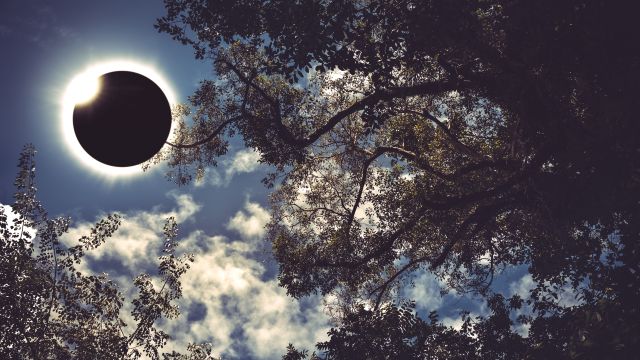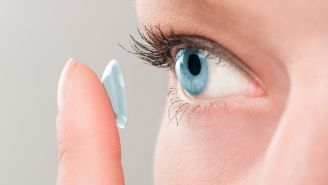It hasn't happened since 1979, and won't again until 2024. But on Monday, August 21, 2017, for the first time since the Carter administration, a total solar eclipse will be visible from the contiguous United States. Stellar!
The eclipse route begins in Oregon, moves southeast across states like Wyoming and Missouri, and ends in South Carolina. For 2 minutes and 40 seconds, weather permitting, those located directly in the 70-mile-wide line—the "path of totality"—will see the sun completely blocked by the moon. Light will fade, dusky colors will appear along the horizon, temperatures will drop and stars and planets will come out as if it was nighttime. Those lucky watchers will also be able to view the sun's corona, or outer atmosphere, a celestial sight as beautiful as it is rare.
While the rest of the country won't get quite the same effect, they'll still be able to view a partial eclipse, where a chunk of the sun is blocked. From New Mexico to Maine, every American can catch a glimpse—as long as they're using the right eye protection and following a few simple rules.
Rule #1: Don't look directly at the sun
Staring at the sun can cause serious, lasting injury to the eye, and even blindness. And though this may sound like well-worn advice, many ignore it during eclipses. After one 1999 event in England, for example, at least 14 people reported big-time damage to their eyesight. Thousands more phoned into hotlines or visited clinics for vision problems. No, really.
Over the course of a total solar eclipse, you can only look at the sun head-on when it's fully blocked—not before, and not after. When not completely covered, its rays are able to penetrate and literally burn your eyes, altering your vision—maybe for good.
Rule #2: Wear protective glasses
When you're waiting for totality or looking at a partial eclipse, you must protect your eyes. Skip the sunglasses, which aren't nearly strong enough, and opt for eclipse glasses. Their lenses have a special type of solar filter, making them thousands of times darker than your favorite pair of shades. The American Astronomical Society keeps a list of reputable vendors. Order only from approved companies; knockoff glasses are reported to be flooding the market in the weeks before the eclipse. Inspect your pair before using them; damaged glasses should be thrown away, as should those more than three years old that don't meet current standards.
Another way to see the eclipse: a good ol' pinhole camera, which you may remember making in elementary school. These DIY devices—often hacked together from paper, shoeboxes, tin foil, your fingers or even a tree—allow you to look at the eclipse indirectly via a projection. Look for instructions online.
Rule #3: Beware of unfiltered lenses
For a better view of the eclipse, you may be tempted to use your camera, a telescope or a pair of binoculars. Hold on, though. The lenses in these optical devices actually concentrate the sun's rays, making them even worse for your vision. Donning your eclipse glasses before gazing through your binoculars won't help you, either; they don't provide enough protection.
Still, eclipses are reportedly best seen up close. So, if you decide to use a magnifying tool, look for special solar filters made for your particular device. They're relatively inexpensive and widely available online. Before the eclipse, make sure the filter fits tightly, and there are no scratches. During the event, when you're not using your filtered camera or telescope, remember to wear your eclipse glasses.
For many of us, a total solar eclipse will be once-in-a-lifetime experience. Make sure you're able to see the full beauty—and still see other things afterward—by taking the right safety measures.






